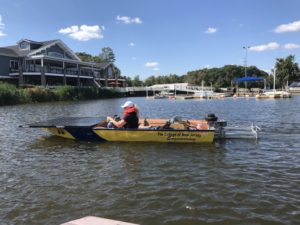The team conducted their first dry test of the integrated systems on Friday, 3/6. This test consisted of two parts: wiring each electrical systems (sprint or endurance), wiring the 12V wires to the dashboard, and connecting the batteries to the panel, and the panel to the respective motor.
The team tested the endurance system first. The outcome of the tests indicated that the electrical panel did perform as expected, however one of the relays are to be replaced, as well as the dual potentiometer. The endurance motor proved to be successful, as the team used a dial on the dash to increase the speed. Next, the sprint configuration was tested. No issues were found in the electrical configuration and the motor performed as expected. However, the RPM of the motors were not able to be tested using Chris’ system, as he is still waiting for a new sensor to arrive. In the upcoming weeks, dry tests will continue to be conducted and the RPM of the motors will be examined using the new system.
In the upcoming weeks, the team will be preparing to conduct water testing. In order to do so, all systems must be finalized (such as ensuring water proof coverage, proper mounting, tightening of belts, etc.). Although the dry test proved to be successful, issues may still arise when the boat is brought out to the water. If so, the team feels prepared to tackle any obstacles proposed.

